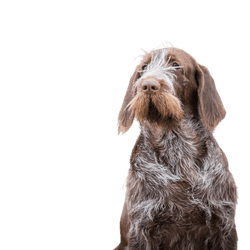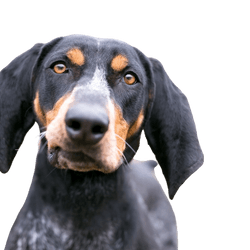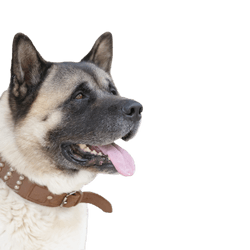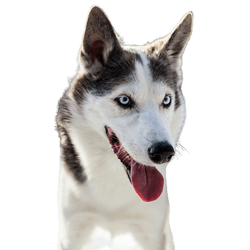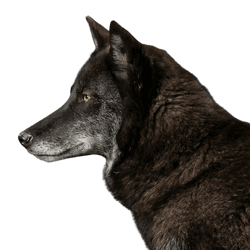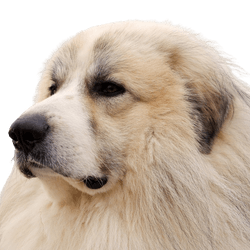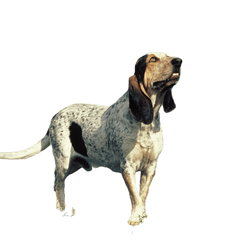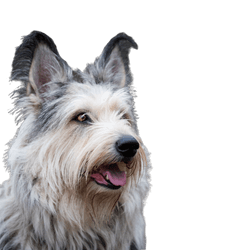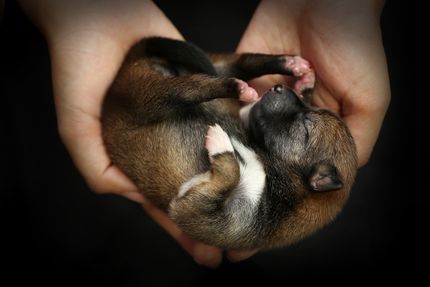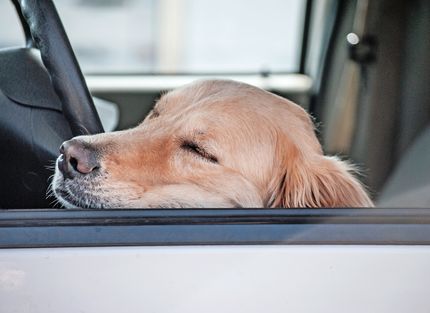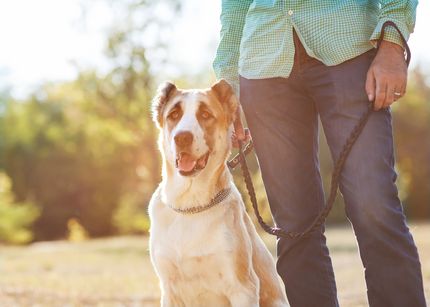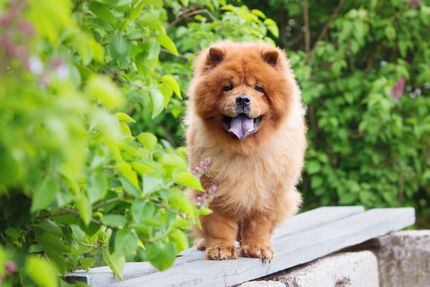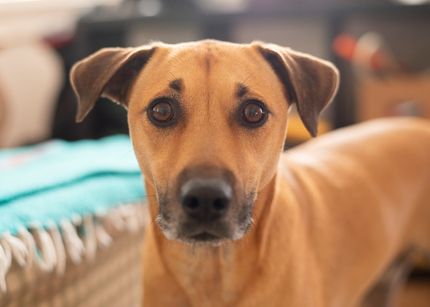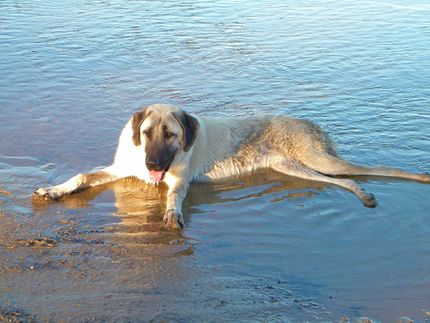Facts & Origin
Origin and history of the Leonberger
The Leonberger was created in the first half of the 19th century, when the demand for large, shaggy dogs increased. One reason for this was the legendary rescue dog and St. Bernard Barry, which, according to legend, saved the lives of many people. However, since at that time there were not enough purebred parents of the St. Bernard, there were also animals used for breeding, which only looked similar to this breed.
The Leonberg dog dealer Heinrich Essig, who was also a city councilor, also recognized the potential. It was his concern to create a dog breed that looked like a lion - after all, this animal was to be found in the coat of arms of Leonberg. He mated a black and white female Newfoundland with a male St. Bernard and later crossed Pyrenean Mountain Dogs. The temporary results were large dogs with predominantly white coats. The first "real" Leonberger was born in 1846.
Until the outbreak of World War I, they were popular with the wealthy as guard dogs and with farmers as draft animals. But during the two world wars the breeding decreased drastically: Hardly anyone could afford a dog of this size, because of the enormous demand for food. So the breed was threatened with extinction until fanciers got together and founded the "German Club for Leonberger Dogs" in Leonberg in 1948.
Suitability and keeping
Today, the Leonberger is found almost exclusively as a family and companion dog. Due to its size, a garden would be suitable in its new home. He is less suitable for dog sports.
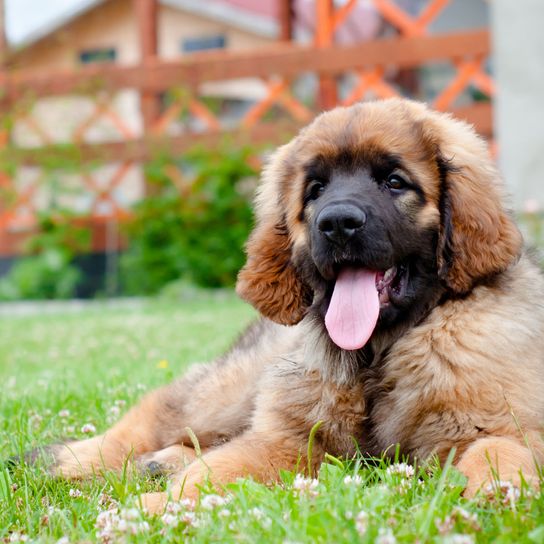

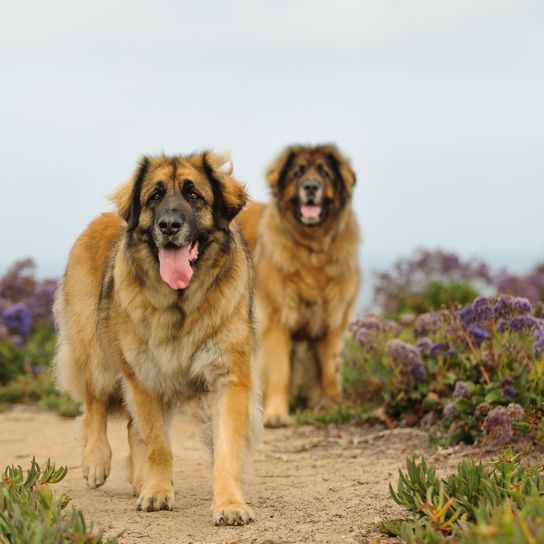

| Alternate Name | - |
| Origin | Germany |
| Life expectancy | 8 - 9 years |
| Care requirements | low-maintenance |
| Activity level | average |
| FCI group | Molossian type |
| AKC group | not recognised |
| KC group | not recognised |
Leonberger mixes
Attitude, character and temperament of the breed
Typical character traits of the Leonberger
The Leonberger seems to be able to bring absolutely nothing from the rest. Even the wild play of noisy children cannot harm him. On the contrary, the dog loves the little members of the family and puts up with a lot with his good-natured nature. As a playmate, he is more suitable for older children because of his size; especially young dogs are playful and can sometimes become impetuous. Nevertheless, he makes an excellent family dog because of his affection and medium temperament. It is also self-confident, confident and non-aggressive.
Since the breed readily submits and has a good memory, training is particularly easy. Nevertheless, he should be trained consistently, as he can show some stubbornness now and then.
Character
Usage
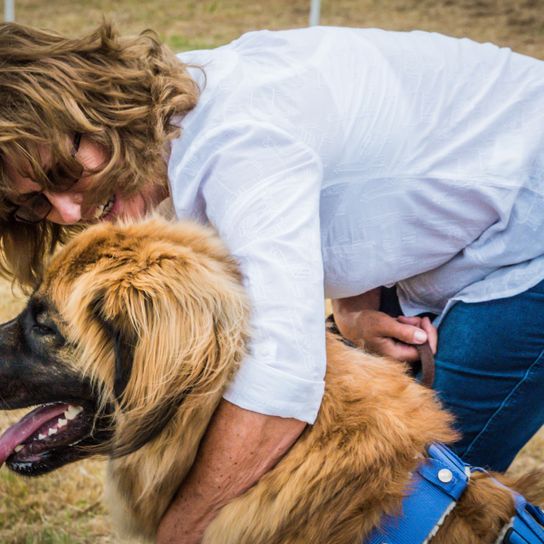

Typical breed diseases of the Leonberger
Since the Leonberger breed was often inbred in the past, hereditary diseases occur more frequently. Also the high weight of the animals contributes to the fact that their health condition possibly deteriorates in old age. Here are some typical diseases:
- Gastric torsion
- Osteoarthritis
- Heart disease
- Hip dysplasia
Unfortunately, this means that the Leonberger has a life expectancy of only 7-9 years.
Leonberger breeding and buying
It is best to visit a Leonberger breeder several times before deciding on a puppy. A look at the parents will give you an idea of what your new family member will look like. It is best not to choose a dog that is bred to be too massive: particularly heavy animals are more prone to joint diseases.

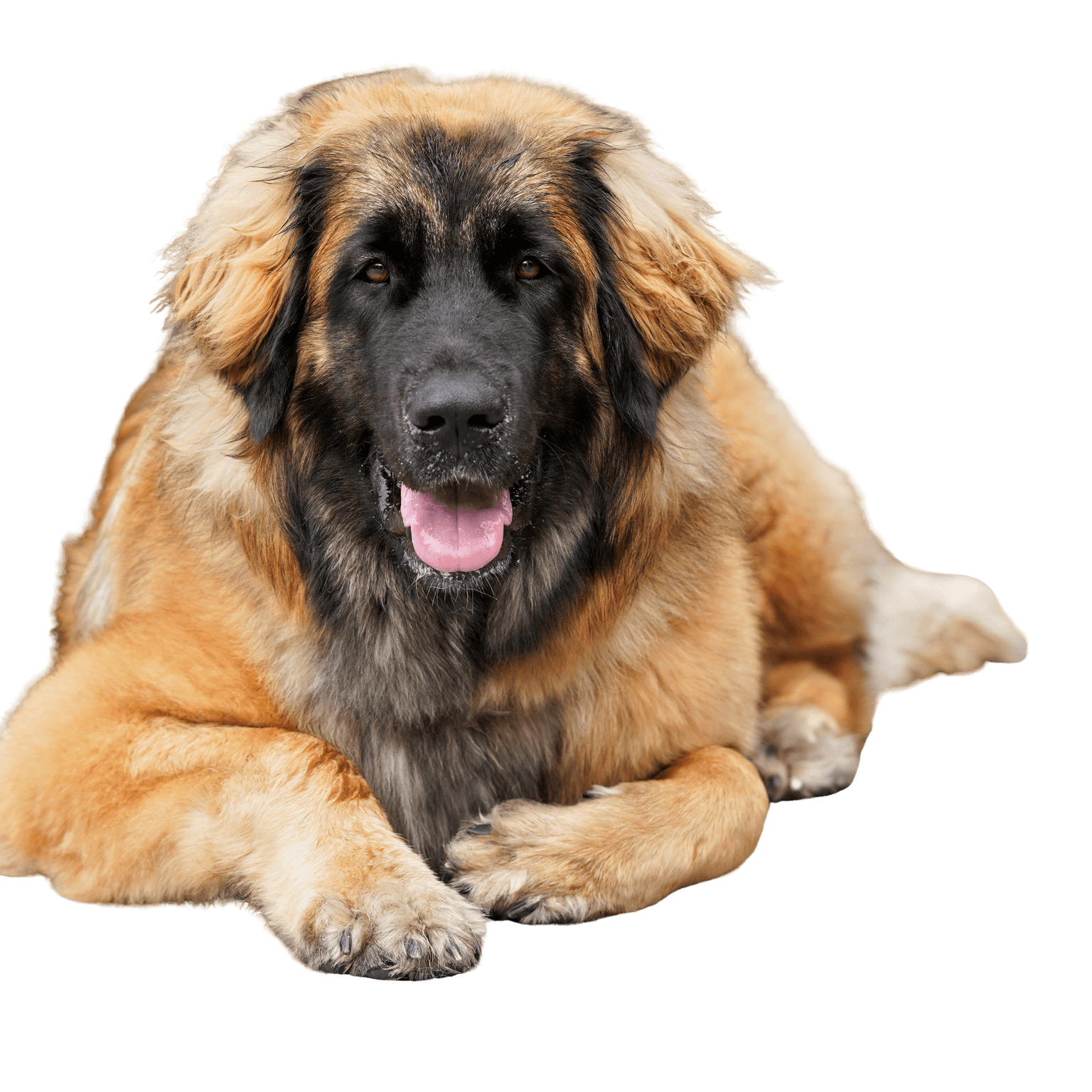
Breed characteristics of the Leonberger
TheLeonberger is classifiedby the FCI as Group 2(Pinscher and Schnauzer, Molossoid - Swiss Mountain Dogs), Section 2.2(Molossoid, Mountain Dogs). No working test isrequired.
As a very large dog breed, males shouldreach a height of about 72-80cm, with a recommended average of 76cm, and bitches 65 - 75 cm, with a recommended average of 70cm. The breed standard does not specify a weight, but they usually weigh between 45-70kg. In this breed very great emphasis is placed on the sex differences.
The gait
The Leonberger has a space-grasping, even movement sequence in all gaits. There is an expansive stride and good thrust.thrust. In walk andtrot,fromfrontandrearViewed,should result in a straight limb alignment.
The head
The head of this breed is on the whole deeper than broad and elongated rather than stocky. The ratio of muzzle to top of head is about 1 : 1. The skin lies close all over, so that there are no forehead wrinkles. The skull is slightly domed in profile and seen from the front, strong to match the torso and limbs, but not heavy. The rear part should not bemuch wider than that at the eyes. The stop is clearly visible, but moderately pronounced.
The muzzle
The muzzle of the Leonberger is rather long, never tapering with a black nose. The bridge of his nose is evenly broad, never sunken - even rather slightly arched (ramsnose).
The black lips are close fittingwith closed lip angles. A scissor bite is typical , with the upper teeth closely overlapping the lower teeth and the teeth set square to the jaws. The absence oftheM3istolerated, also a pincer bite ispermissible. However, there must be no constriction in the canines inthe lower jaw. The jaws are only slightly developed.
The eyes & ears
The medium sized, oval eyes of the Leonberger are light brown to as dark brown as possible, neitherdeep-set nor prominent, but also neither too narrow nor too wide apart.The eyelids are attached andnoconjunctiva is visible. The white of the eye (the visible part of the sclera) must not be reddened.
The pendulous ears, which are also medium in size , areset onhigh, notfarback and are fleshy.
The rump
The neck of the Leonberger runs iIn aslightcurvewithout astep intothe(especially in males) pronounced withers. It is rather long than stocky, without loose throat skin or dewlap. The straight back is tight but broad, the loins equally broad and strong as well as well muscled. Continuing lies a broad, relatively long butgentlyrounded croup, which mergessmoothlyintothe tail set on and must in no case be overbuilt.
Leonbergers have a broad, deep chest that reaches at least to elbow level, but is not too barrel-shaped, but rather oval. The lower profile line andbelly are only slightly tucked up.
The tail
Very richly coated, the tail is straight hanging when standing. But also in movement it should be carried only slightly curved up and preferably not extending beyond the length of the topline.
The limbs
The limbs are very strong, especially in the male. Theforelegs should be straight, parallel and not tightly set. The well-muscled shoulders and upper arms are long and sloping. They form with each other a not too obtuse angle. The elbows are close together, the strong pasterns are firm andstraight when viewed from the front and almost vertical when viewedfrom the side.
The position of the hind legs, seen from behind, shouldnot be too narrow but parallel. The pelvis lies oblique, the rather long and strongly muscled thigh likewise . The latter forms a distinct angle with the lower leg. The hock isstrong with adistinct angle between the lower leg and the hind pastern.
The front feet should be rounded, the hind feet only slightly elongated. Both are straight set with arched toes and black pads.
The coat
The coat of the Leonberger is medium to coarse, abundantly long, close lying and never parted. It should still show the shape of the conformation everywhere, despite a good undercoat. Furthermore, it is simple, slightly wavy is still permitted. On the neck and chest (especially in males) it forms a mane. There is a clear feathering of the front, and pronounced pants on the hind legs.
In terms of color, the Leonberger comes in lion yellow, red, reddish brown, also sand-colored (pale yellow, cream) and all combinations between them, each with a black mask. Black hair tips are permissible, but black must not determine the basic color of the dog. Lightening of the ground color on the underside of the tail, on the ruff, the feathering of the forelegs and the pants of the hind legs must not be so pronounced as to disturb the harmony with the main color.
A small white chest patch or narrow chest line and white hairs on the toes are tolerated.
| Fur length | medium |
| Fur | flat coated |
| Ear shape | Floppy Ear |
| Tail | fanned out |
| Anatomy | hefty |
| Size ♀ | 65 - 76 cm |
| Weight ♀ | 42 - 59 kg |
| Size ♂ | 72 - 80 cm |
| Weight ♂ | 72 - 80 kg |
| Suitable For | Children |
Colors
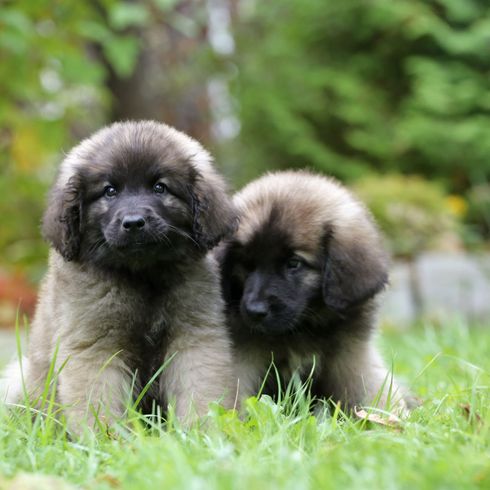

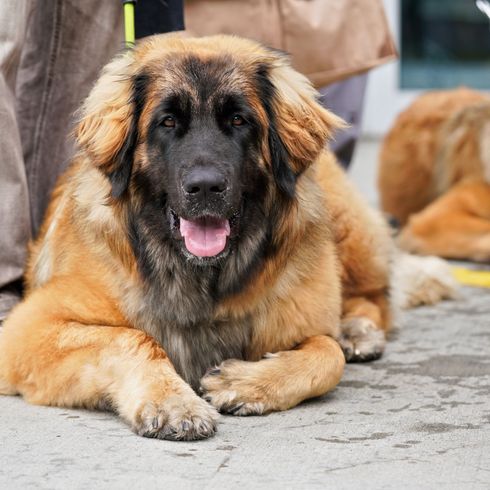
Known Diseases
Hip dysplasia (HD)
Hip dysplasia (HD) is a genetic condition in dogs where the hip joint is not shaped properly. This leads to pain, stiffness and restricted movement.
Elbow dysplasia (ED)
Elbow joint dysplasia is a chronic disease complex of the elbow joint of fast growing dog breeds.
Bone Cancer
May occur with age.
FAQ
-
A Leonberger puppy costs about 2000 euros.
-
The Leonberger needs average exercise and is very happy with 3 walks. However, he feels most comfortable when he has a garden at home where he can romp and play from time to time when he feels like it.
-
No, the Leonberger is not the biggest dog breed in the world. That is the Great Dane, but Leonbergers are among the giant dog breeds.
-
The Leonberger is a large and strong dog breed known for its gentle and loving nature. He is well suited as a family dog and also has the potential to take on a variety of tasks.
-
The Leonberger and St. Bernard are both great dog breeds, but there are some significant differences between them. Here are some of the most important differences:
Origin: The Leonberger was bred in Germany, while the St. Bernard originated in Switzerland.
Appearance: The Leonberger is an athletic and strong dog with a dense, long-haired coat, while the St. Bernard is more of a massive and compact dog with a short and thick coat.
Temperament: the Leonberger is known for its gentle and affectionate nature, while the St. Bernard is more of a friendly and even-tempered dog.
Uses: The Leonberger is often kept as a family dog, but is also used as a therapy dog and in herding and search work. The St. Bernard was originally bred as a herding dog, but is now also kept as a family dog and rescue dog.
Size: The Leonberger is usually larger than the St. Bernard, but both breeds are among the largest dog breeds.
-
No, the Leonberger is less suitable for dog sports.
-
Yes, the Leonberger is an excellent family dog.
-
Yes, the Leonberger can also be kept as a beginner dog.










